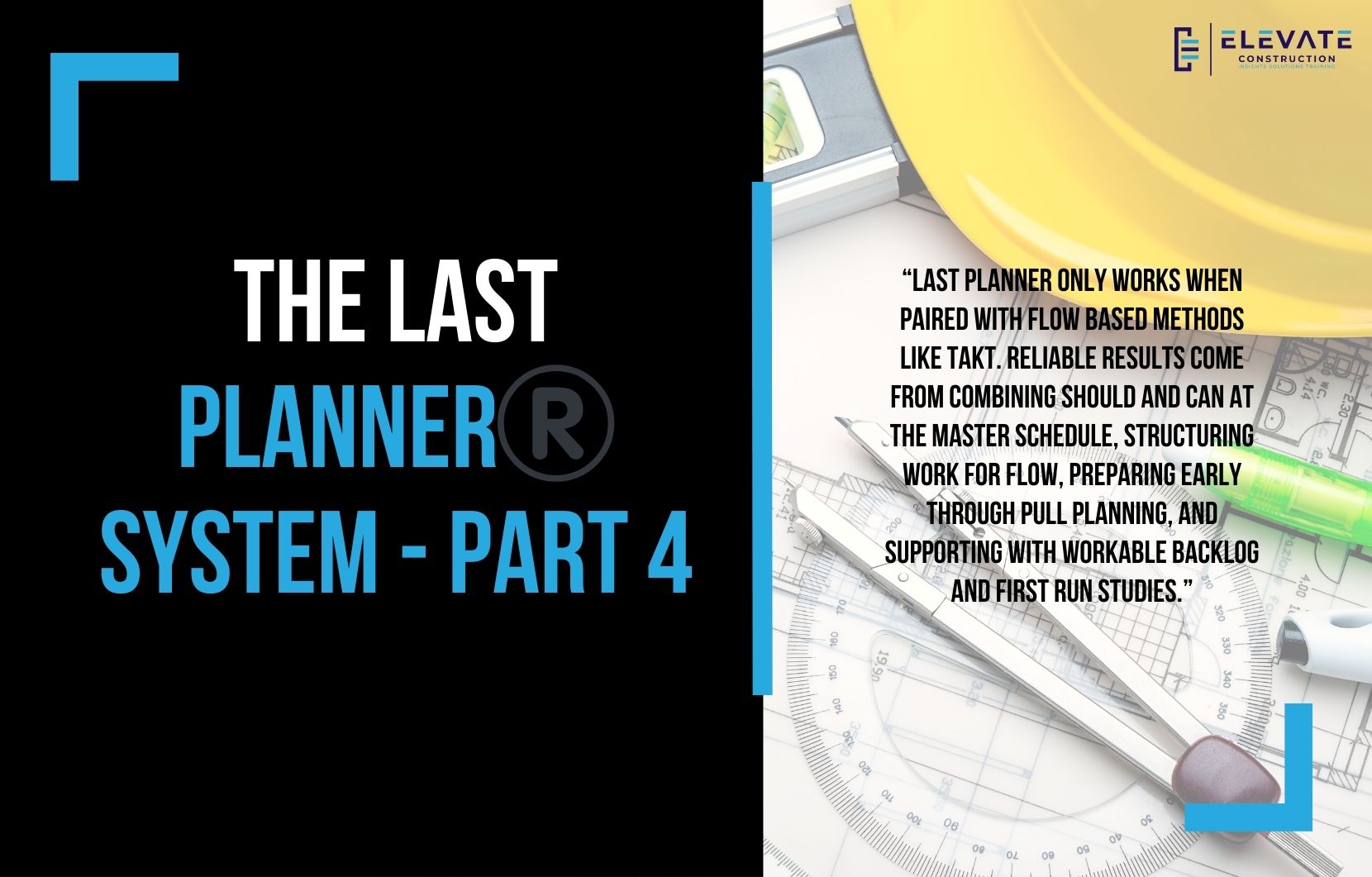The Last Planner System has gone through a detailed review in this series, and now it is time to wrap it all together. My goal is to take these concepts, combine them with real field experience, and create a Last Planner implementation guide that is clear, structured, and full of practical visuals. This way, people can learn directly from tested experimentation and avoid the common pitfalls that weaken results.
One of the biggest issues in current guidance is the way the framework is described through the words should, can, will, and did. At first glance, this seems simple. The problem is that most master schedules only express what should happen, without showing what is actually possible. CPM schedules do this well enough, but they miss reality. They tell you what the demand is without reflecting what the system can achieve.
A better approach is to start with a macro level takt plan that establishes both should and can together. This way, the master schedule is not just a statement of demand but a realistic flow-based representation of what is possible. From there, pull planning confirms the feasibility and introduces buffers. That becomes the true can. Weekly work planning then produces a reliable will, and if the system has been set up properly, the did should result in close to 100 percent plan complete. Without this structure, everything downstream is weakened.
Work structuring is another critical area. By definition, it answers how work will be sequenced, assigned, and handed off. It asks whether consecutive crews will flow smoothly or whether buffers will be needed. In reality, the most effective way to handle work structuring is through takt planning. No other approach consistently creates flow across zones and crews. Even methods like advanced work packaging attempt to align supply chains but stop short of true zone-based flow optimization.
This same misunderstanding shows up in how phases are described. Many treat phases as simply dates on a calendar. In truth, a phase is a grouping of zones tied to a specific scope of work, and it should be structured through takt to optimize throughput. This is how milestones are reliably met.
The concepts of shielding and screening also show the limits of current practice. Shielding is about protecting crews from uncertainty by only placing quality assignments into the weekly plan. The problem is that this happens far too late. Proper pull planning done months before the phase start already resolves sequencing, flow, and preparation. If that work is skipped, shielding becomes an attempt to fix symptoms rather than root causes. Similarly, screening should not be about pushing or delaying tasks reactively. The planning of preparation should have already addressed roadblocks and constraints.
Another overlooked concept is workable backlog. The way it is sometimes defined creates confusion. In reality, a workable backlog consists of areas that are not on the critical chain but are ready for work. Crews can shift into these areas if delays occur, or small teams can maintain progress there and then rejoin the main flow when needed. This provides swing capacity and buffers the production system without breaking rhythm.
First run studies are one of the most valuable tools for preparation. By testing or simulating an operation before it begins, the team learns what cycle times are realistic and how methods should be refined. These can be done through mock ups, past project observation, or even controlled trials. Too often, teams wait until full production to discover inefficiencies. A simple first run study prevents wasted time and ensures readiness.
The final point that must be made is that CPM schedules cannot be paired with Last Planner. They simply do not work together. CPM creates the illusion of control without flow, and it undermines everything downstream. Takt, pull planning, and flow based systems provide the structure needed for reliable promises and continuous improvement.
As I finish this series, the goal is clear. I am going to consolidate these learnings, remove the outdated visuals, and publish a Last Planner implementation guide. This will combine tested field experience with proven methods so that anyone can adopt the system with clarity and confidence. The end result should be a tool that elevates the industry and gives builders the ability to plan, commit, and deliver at the highest level.
Key Takeaway
Last Planner only works when paired with flow based methods like takt. Reliable results come from combining should and can at the master schedule, structuring work for flow, preparing early through pull planning, and supporting with workable backlog and first run studies.
If you want to learn more we have:
-Takt Virtual Training: (Click here)
-Check out our YouTube channel for more info: (Click here)
-Listen to the Elevate Construction podcast: (Click here)
-Check out our training programs and certifications: (Click here)
-The Takt Book: (Click here)
Discover Jason’s Expertise:
Meet Jason Schroeder, the driving force behind Elevate Construction IST. As the company’s owner and principal consultant, he’s dedicated to taking construction to new heights. With a wealth of industry experience, he’s crafted the Field Engineer Boot Camp and Superintendent Boot Camp – intensive training programs engineered to cultivate top-tier leaders capable of steering their teams towards success. Jason’s vision? To expand his training initiatives across the nation, empowering construction firms to soar to unprecedented levels of excellence.
On we go

